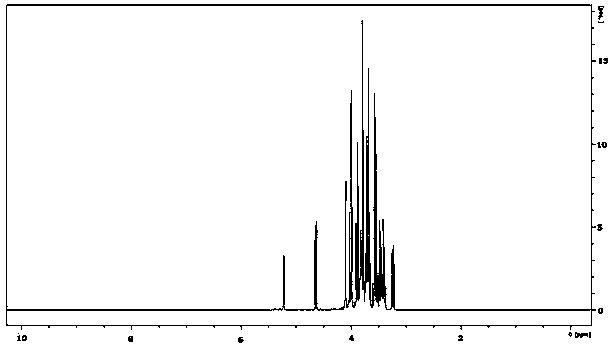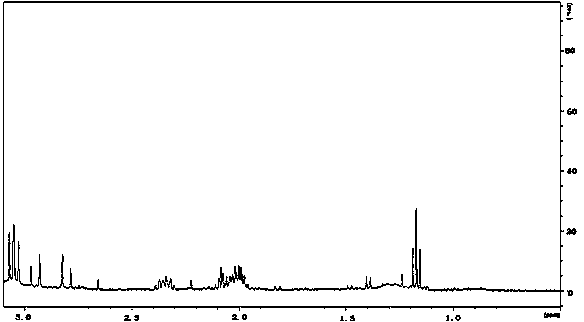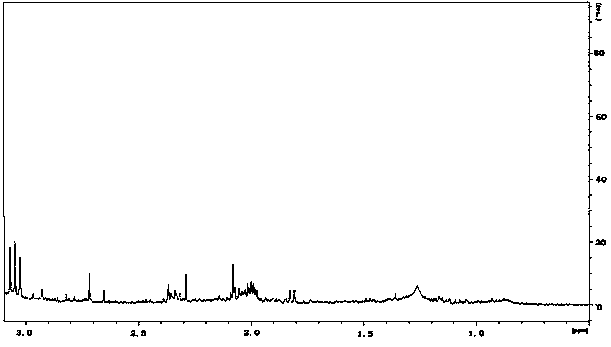Manuka honey identification method based on nuclear magnetic resonance technology
A manuka honey and nuclear magnetic resonance technology, which is applied in the fields of nuclear magnetic resonance analysis, material analysis through resonance, instruments, etc., can solve problems such as impact, and achieve short analysis time, strong controllability, and good specificity Effect
- Summary
- Abstract
- Description
- Claims
- Application Information
AI Technical Summary
Problems solved by technology
Method used
Image
Examples
Embodiment 1
[0032] Example 1 Determination of Characteristic Markers
[0033] 1. Instruments and equipment
[0034] Experimental equipment includes: Advance 400 nuclear magnetic resonance instrument (Bruker, Switzerland), 14.1 T superconducting magnet, 5 mm dual-core z-gradient probe and Topspin 2.3 test control and data processing software; 5 mm nuclear magnetic resonance sample tube; high-speed centrifuge (Sigma , German company); Vortex mixer (XW-80A, Shanghai Medical University Instrument Factory); LP403 analytical balance (Sartorius, German company);
[0035] Experimental solvents include: deuterated water (99.8% deuterium band) purchased from Cambridge Isotope Laboratories; 3-trimethylsilyl-1-propyl sodium sulfonate (TSPSA) purchased from Aldich-Sigma; dihydrogen phosphate Potassium and sodium dihydrogen phosphate (excellent grade) were purchased from Aldich-Sigma.
[0036]2. Honey Sample Collection
[0037] A total of 7 varieties of manuka honey, kanuka honey, rivariwa honey, ka...
Embodiment 2
[0048] The samples submitted for inspection are respectively labeled as 1, 2, 3, and 4.
[0049] Pretreat the sample according to its nature, specifically:
[0050] For commercially available honey samples, stir them evenly, accurately weigh 0.25 g of samples into a centrifuge tube, add 1 mL of heavy water, and dissolve completely; take 0.8 μl of the above solution, add 100 μl of 0.5 mol / L phosphate buffer solution (pH =2.0), wherein the buffer solution contains 0.05% volume fraction of 3-trimethylsilyl-1-propyl sodium sulfonate internal standard solution and 0.1 mM sodium azide, vortexed to mix evenly, and then Use 1.0 mol / L hydrochloric acid and sodium hydroxide to adjust the pH of the final solution to 2.5, and take 600 μl of it in an NMR tube.
[0051] For the honey sample, stir it evenly, filter it with a nylon filter cloth with a pore size of 0.10mm-0.14mm, remove the solid impurities in the honey, accurately weigh 0.25 g of the sample in a centrifuge tube, add 1mL of h...
PUM
| Property | Measurement | Unit |
|---|---|---|
| pore size | aaaaa | aaaaa |
Abstract
Description
Claims
Application Information
 Login to View More
Login to View More - R&D
- Intellectual Property
- Life Sciences
- Materials
- Tech Scout
- Unparalleled Data Quality
- Higher Quality Content
- 60% Fewer Hallucinations
Browse by: Latest US Patents, China's latest patents, Technical Efficacy Thesaurus, Application Domain, Technology Topic, Popular Technical Reports.
© 2025 PatSnap. All rights reserved.Legal|Privacy policy|Modern Slavery Act Transparency Statement|Sitemap|About US| Contact US: help@patsnap.com



